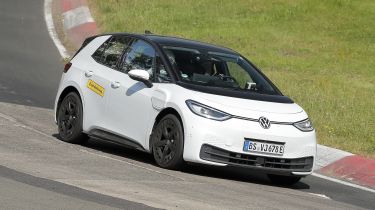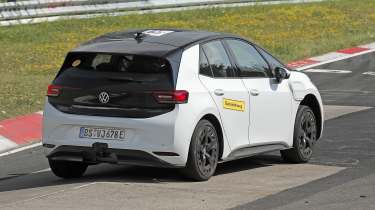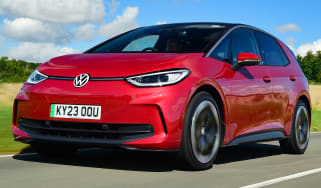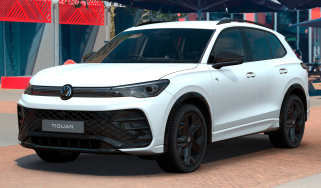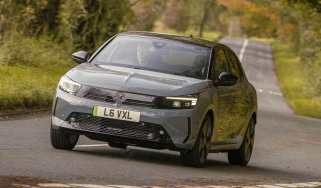Groundbreaking new Volkswagen ID.2 supermini spied testing for the first time
Groundbreaking new Volkswagen ID.2 spied testing for the first time
You’re looking at the new Polo-sized Volkswagen ID.2 that has spied testing for the first time on Germany’s famous Nürburgring Nordschleife. The new supermini-sized EV is a critical moment for VW, a brand whose first attempt at a line of bespoke electric cars received a lukewarm response at best.
So with lots at stake, VW’s not taking any chances with its next generation – one that we’ve already been given a good insight into thanks to both concept cars, and assertions from VW’s top brass that it can’t mess them up again.
Despite running on a shortened ID.3 body, we know that the new ID.2 will run on a new ‘MEB Entry’ architecture. This will be an optimised version of the previous car’s platform that won’t just be more flexible, but also run with largely front-mounted single-motor powertrains in contrast to today’s rear-mounted majority. This won’t just lead to more scope for manufacturing simplification, but also return VW’s electric models to a more familiar set of physical proportions and driving dynamics familiar to its beloved combustion models.
This prototype doesn’t quite show off the new proportions, thanks to the ID.3 body on top, but underneath we expect the traditional two-box shape to return, as previewed by Andreas Mindt’s ID.2all Concept. Another major difference refers to the charge port, which resides on the front wing of this prototype, rather than the rear quarter of all current MEB products.
Another interesting detail is the fact this prototype is running on a 20-inch wheel design borrowed from sister company Cupra, suggesting that the new ID.2 from its very inception will be designed to suit larger, concept-car like elements like big wheels and tyres.
Being a simplified set of underpinnings, we’re not expecting the new MEB Entry architecture to be breaking any records when it comes to battery size or charging speeds, but VW has been adamant that efficiency is of peak of importance, and ensuring that even if battery sizes don’t go up, their energy efficiency means they’ll post equal, if not better range figures to today’s ID.3.
Beyond the technical elements, though, the ID.2 will also right VW’s path in terms of in-cabin tech and user interfaces. Physical controls are back on the agenda under the new design mandate, with a balance of digital interfaces and tactile elements across the interior. The overall design inside and out will also be cleaner, smarter and more directly related to the premium-not-posh methodology that made cars like the Golf and Polo so compelling over their many decades of success.
For now, though, we’ll have to wait until the end of 2025 or 2026 to see VW’s new generation of EVs in production form. As well as this ID.2 model, we also expect a crossover of similar size joining the range soon, until a new Golf-sized ID.3 replacement arrives to be sold alongside the existing combustion-powered Golf later in the decade. As well as VW, this platform will also find homes under future Cupra, Skoda and even SEAT superminis, plus a plethora of new crossover models across all three of VW’s ‘core’ brands.
Fancy a fully-electric bargain? These are the cheapest electric cars on sale...

